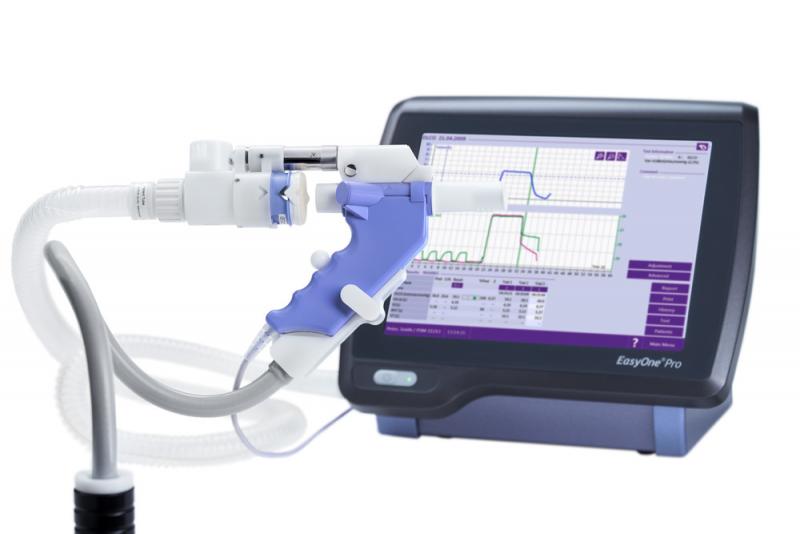A spirometer is a medical device used to measure lung functions. It is used by healthcare professionals to test how well lungs work and detect certain lung diseases. Spirometry helps diagnose and monitor conditions that affect airflow within the lungs such as asthma, bronchitis, emphysema and other chronic obstructive pulmonary diseases. In this article, we will discuss in detail what a spirometer is, how it works, its various types and importance in respiratory care.
What is a Spirometer?
A spirometer is a noninvasive medical device used to measure lungs' forced expiration volume. It measures the volume of air that can be forcibly exhaled from the lungs after maximum inhalation. During a spirometry test, the patient forcibly blows air out as fast and as long as possible through a mouthpiece or disposable tubing that is attached to the spirometer. This allows respiratory therapists and physicians to evaluate lung function parameters like forced vital capacity (FVC), forced expiratory volume in 1 second (FEV1), their ratio (FEV1/FVC), peak expiratory flow rate (PEFR) and more.
Mechanism of Spirometer
A Spirometer works on the principle of displacement or fluidic measurement. It has either a piston or a rotating propeller mechanism inside which moves when a person blows into the device. The movement of piston/propeller is proportional to the volume of air exhaled. This displacement is then converted by the spirometer's electronics into volume measurements that are displayed digitally. Most modern spirometers use advanced microprocessors and flow sensors that make volume calculations faster and recordings more precise.
Types of Spirometers
Desktop Spirometers
Traditional desktop spirometers are the most common type used in hospitals and pulmonary function testing labs. They are large in size and require ac power supply. They provide highly accurate readings but lack portability.
Handheld Spirometers
Handheld spirometers are compact, lightweight devices that can be easily carried for use in various clinical setups. They have built-in batteries and memory to store readings. However, they are less precise than desktop models.
Peak Flow Meters
Peak flow meters specifically measure peak expiratory flow rates useful in monitoring obstructive airway diseases like asthma. They are small, inexpensive and easy to use devices suitable for home monitoring.
Online Spirometers
Online spirometers are connected to computers to record and display pulmonary function data. The readings can be analyzed on screen or stored digitally for future reference. These allow simultaneous recording of data from multiple patients.
Importance of Spirometry Testing
Diagnosis of lung diseases
Spirometry is the gold standard test to diagnose obstructive and restrictive lung diseases. It helps identify airway obstruction characteristics of asthma, COPD, bronchiectasis and other conditions.
Disease Severity Assessment
It helps assess the severity of respiratory diseases based on impairment levels indicated by abnormal lung function values. More severe obstruction shows lower FEV1, FVC values.
Treatment monitoring
Spirometry aids in monitoring disease progression and response to treatments like medications, pulmonary rehabilitation. Periodic follow up tests shows changes in lung functions.
Pre-operative risk evaluation
It is used pre-surgery to determine a patient's respiratory reserve and risk of pulmonary complications during general anesthesia.
Occupational lung hazard screening
Workers exposed to dusts, chemicals, or smoke may undergo regular spirometry screenings to detect early signs of occupational lung diseases.
In summary, spirometry plays a very important role in evidence-based respiratory care. By objective quantification of lung volumes and flows, it assists physicians in arriving at accurate diagnoses, determining treatment approaches and monitoring long-term outcomes of patients with lung disorders. With advancements in spirometer technology, pulmonary function testing has become more convenient and accessible.
In conclusion, the article discussed what a spirometer is and how it works via different mechanisms. It described the various types of this essential medical device used in pulmonary function testing. The importance of spirometry testing was explained in the diagnosis and management of respiratory diseases as well as its role in occupational health screening. Spirometry is a mainstay for evaluating lung functions and remains integral to respiratory medicine practice.
